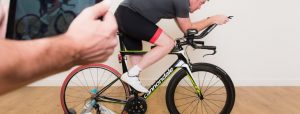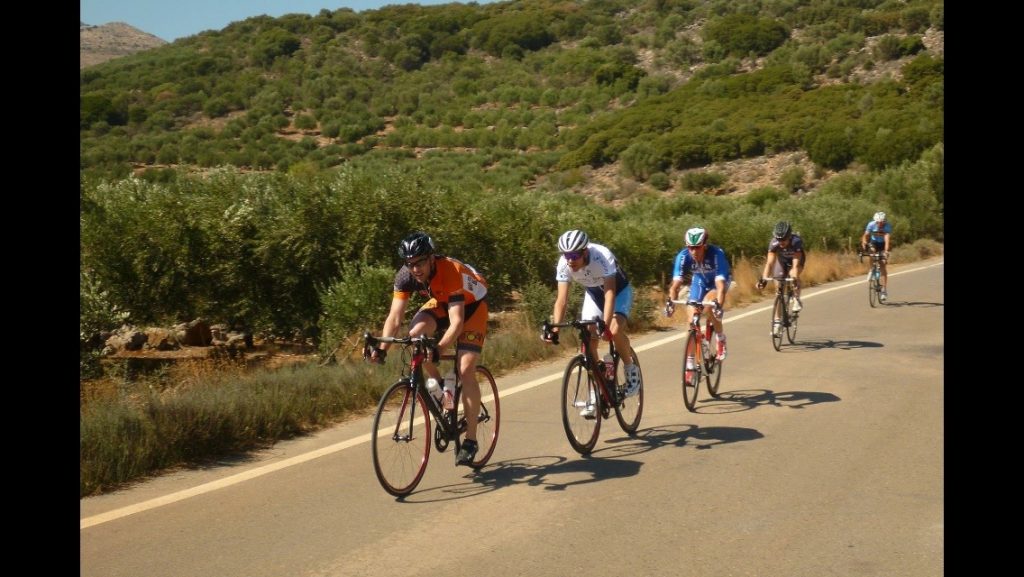
3 Ways to Solve Knee Injuries in Cycling – Part 3
Introduction
Knee pain is one of the most common injuries in cycling, accounting for between 30-60% of all injuries, depending on what you read. In my experience, it is certainly the most common complaint I see and deal with.
In parts 1 and 2 we covered load management and strength/mobility. It’s certainly reasonable to try a few things before rushing off for advice. However, I would caution against ignoring injury for too long. It’s all too easy to stay in denial for months and dig. yourself a big hole.
So when should you seek advice? and where from?
3 – Seeking Professional Advice from Therapist or Bike Fitter
I’d probably split this down into 2 broad categories:
- Influencing the body
- Influencing the bike
Clearly, there’s a big overlap between these two, but to try and keep it simple, lets go with it.
Influencing the body can be anything from manual work on muscles, joints, neural mobility, balance, strength, coordination and many more. Again, you will see the overlap with our second strategy (Strength and Mobility)…a strong, skilful body with help you.
A lot of these gains are possible with exercise and the strategies outlined in part 2. However, sometimes more help is required and manual work from a physiotherapist can save a lot of time allowing you to progress the on bike and off bike exercises more quickly.
For example, we’ve all seen cyclists where one or both of their knees flare out at the top of the pedal stroke. This is most commonly due to stiffness in the hips, where hip flexion and/or hip internal rotation are limited meaning that to get the foot over the top of the pedal stroke the hip ‘buys’ some range using external rotation. This is what makes the knee flare out.
Now as we’ve said, this may not be optimal for the knee, but the knee can’t change it, it’s forced into this pattern by the hips. Manual therapy and exercise can really help increase hip range and change this pattern for the knee to a pattern of movement that no longer causes undue stress on the knee.
This is just one example, but similar could be seen all over the body. A little targeted help from a physio can allow self-help/maintenance to be far more rapid and sustained.
Influencing the bike is simply a way of influencing the body through the bike, but is no less effective. Changing the position on the bike is something we are all familiar with. I tinkered with my position for years, before I finally got a bike fit. I was totally blown away by how much more effective a bike fit was than my endless changes.
Since then of course I have extensively studied bike fitting and completed my qualifications to help my patients and clients directly. As well as the formal qualifications I have studied informally through Steve Hogg’s ebooks and blogs (which are incredibly detailed) and also I have spent a large amount of time researching bike fitting through my Clinical Biomechanics MSc.
In the example above we looked at the knees flaring out due to stiff hips. If the pattern persists even after you have achieved as much range as you can from the hips/body, you need to look elsewhere for help. Here is where bike fitting can be so important. You can set the bike up so less hip flexion is required by making sure the saddle is at the right height, bar reach/height, altering the crank lengths, looking at pedal stack, pedal spacers and I’m sure many other options. This solution is never a generic 1+1=2 scenario. Everyone is an individual and comes with their own bike set up, their own movement patterns, their own injury history, their own set of beliefs. Everyone is an individual and the best results come from always treating my patients and clients with the highest level of individual attention.
The other advantage of influencing the bike is that the changes to the bike can be done instantly. Though this won’t necessarily solve all your pain instantly, you can buy some ROM so you can keep training while you work on the body. The bike fit can then evolve as the body improves, making for a quicker outcome that allows training to continue.
In Summary
Preventing injuries is the best-case scenario and having a good quality bike fit and a good movement regime off the bike are the best ways to achieve this.
If injuries do occur, don’t stay too long in denial! Look at the issue and its possible causes and try to address them. If it is beyond your knowledge or skill set then it is time to seek the advice from those who can help.
I’d caution against asking the internet…I see these posts all the time. You get a million answers all saying different things, each from an individual with a biased perspect. For example ‘raise your saddle 5-10mm, takes pressure off the knee…I’ve had no pain since I did it’ (I see that one a lot!). That’s great for that individual, but who. knows why they had knee pain? It may be for completely different reasons to you…your saddle may be the perfect height.
That is where the value of a trusted physio/bike fitter can really pay off. If they are good, they minimise the bias, have an objective view and can look at you as an individual. This gives you a much better chance of understanding why you have knee pain and how you can solve it.
I really hope these posts are helpful, but if you have any questions at all leave them in the comments below or you can email me directly.
coach@summitcyclecoaching.co.uk
Neil Poulton
BSc. Physiotherapy
BSc. Sports Science
MSc. Clinical Biomechanics (ongoing)
ABCC Level 3 Cycling Coach
Bike Fitter
Any questions
If you have any questions or comments you can ask them in the comments section below or email:

